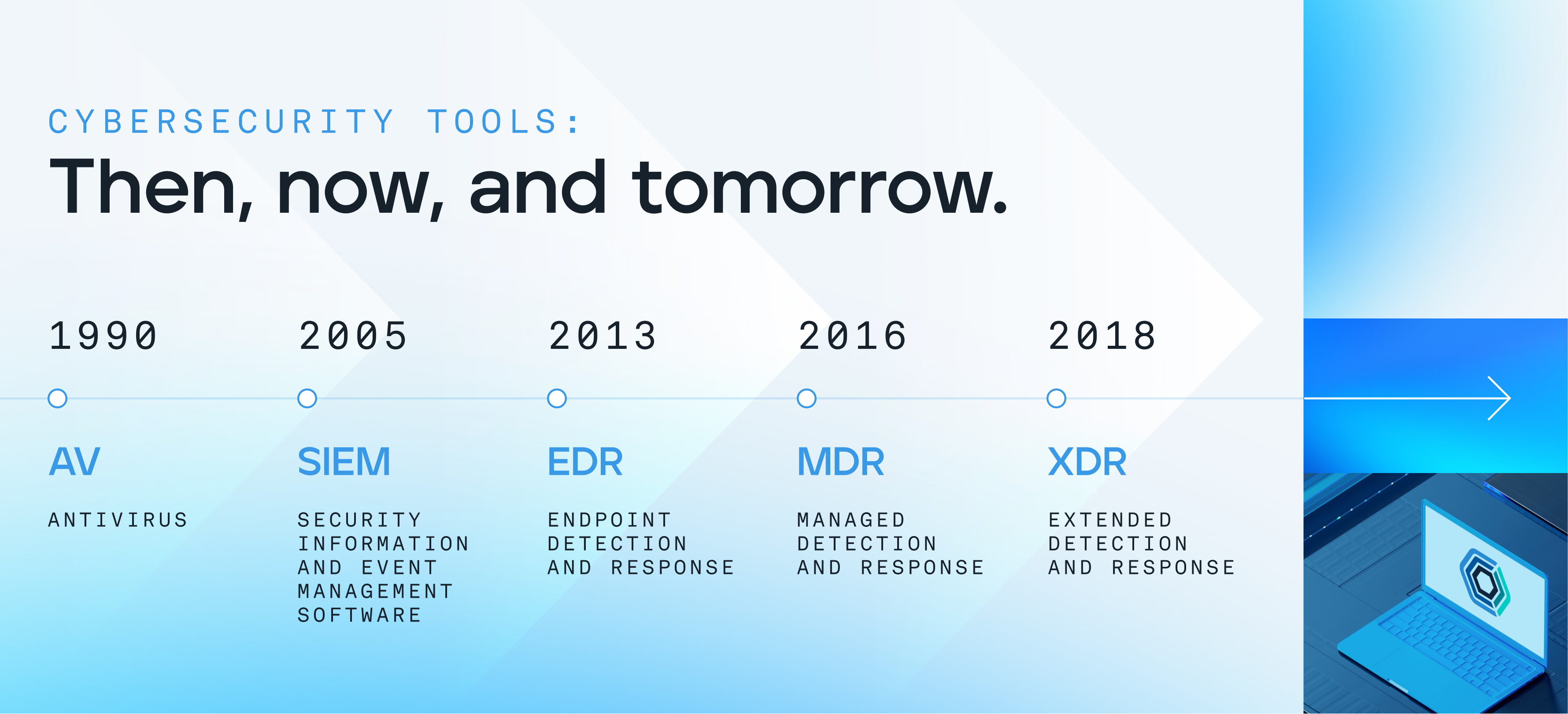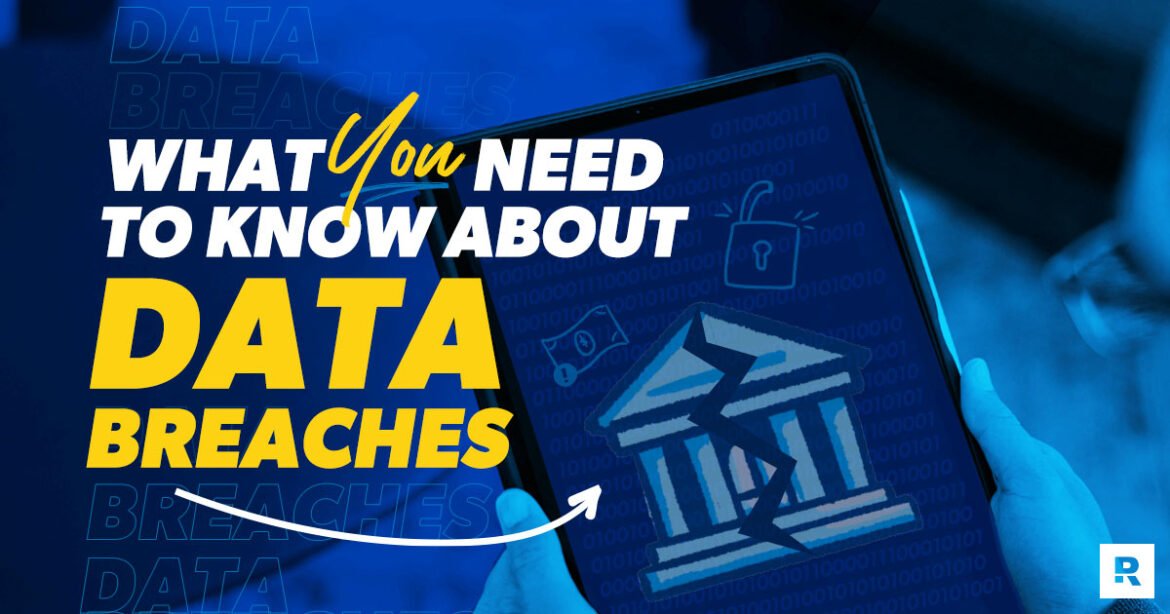
Understanding Cybersecurity and Data Breaches
What is Cybersecurity?
Cybersecurity can be likened to a digital fortress, designed to protect sensitive information and systems from unauthorized access, theft, and damage. In today’s interconnected world, where most personal and business interactions occur online, robust cybersecurity measures are more important than ever. It encompasses the technologies, processes, and practices that safeguard computers, networks, and data.
Think of cybersecurity as locking your home before you leave. You wouldn’t make it easy for intruders, right? Similarly, organizations must implement layers of security to deter cybercriminals actively seeking to exploit vulnerabilities. This includes:
- Firewalls: Acting as a barrier between trusted internal networks and untrusted external ones.
- Antivirus Software: Detecting and neutralizing harmful software that infiltrates systems.
- Access Controls: Ensuring that only authorized personnel can access sensitive data.
Types of Data Breaches
Data breaches come in many forms, each posing unique risks to organizations and individuals alike. In fact, understanding these types is crucial for developing effective prevention strategies. Some common types include:
- Hacking: Cybercriminals exploit weaknesses to infiltrate systems.
- Phishing: Deceptive emails trick users into revealing sensitive information.
- Malware: Malicious software designed to damage, disrupt, or gain unauthorized access.
Consider this: a renowned retail chain recently faced a significant data breach when hackers exploited a flaw in their payment processing system, exposing millions of customers’ credit card information. This incident underscores the urgent need for comprehensive cybersecurity strategies.
By understanding cybersecurity and the various types of data breaches, organizations can better equip themselves to face the challenges posed in the digital age.
Impact of Data Breaches
Financial Consequences
The impact of data breaches extends far beyond the immediate security concerns; the financial consequences can be staggering. Imagine an organization that invests millions in cybersecurity measures only to face a breach that costs them even more. The costs associated with a data breach often include:
- Incident Response Costs: Expenses incurred to investigate, contain, and remediate the breach.
- Legal Fees: Organizations might face lawsuits from affected customers and regulatory penalties that can reach millions.
- Customer Notification: Compliance with regulations can mandate notifying affected individuals, which can be costly and time-consuming.
For instance, a notable data breach in 2017 resulted in a financial loss of over $200 million for a large corporation due to direct costs and lost business. This example illustrates how quickly a breach can derail financial health.
Reputational Damage
Beyond dollars and cents, the reputational damage from a data breach can be insidious and long-lasting. When consumers lose trust in a brand, the effects can ripple through every aspect of its business, leading to:
- Loss of Customers: Many consumers may choose to take their business elsewhere, fearing for the safety of their personal data.
- Stock Price Decline: For publicly traded companies, breaches can lead to immediate drops in stock prices, further harming financial stability.
- Negative Public Perception: Media coverage surrounding data breaches can tarnish a brand’s image, with the infamy often remaining long after the breach is resolved.
A personal anecdote comes to mind: a friend once shared how their preferred online clothing retailer suffered a breach. Afterward, she felt uneasy about placing future orders, showcasing how personal trust can be eroded quickly.
In summary, the impacts of data breaches are multifaceted, affecting not just finances but also the fundamental trust consumers have in brands. Understanding these repercussions emphasizes the urgency of proactive cybersecurity measures.

Common Cybersecurity Threats
Phishing Attacks
As we continue exploring the landscape of cybersecurity threats, phishing attacks emerge as one of the most prevalent and insidious forms of cybercrime. Picture this: you receive an email that appears to be from your bank, asking you to verify your account details due to suspicious activity. It looks legitimate, but in reality, it’s a cleverly disguised attempt to steal your personal information.
Phishing exploits human trust and curiosity. Some common characteristics of phishing attacks include:
- Urgency: Messages often create a sense of alarm, prompting the victim to act quickly.
- Official-looking Emails: These emails are designed to mimic legitimate entities, often using logos and familiar language.
- Links to Fake Websites: Attackers provide links that lead to malicious sites, where users are prompted to enter sensitive information.
Just recently, a colleague of mine nearly fell victim to a phishing scam when he received an email that seemed to be from his workplace’s IT department. Thankfully, he took a moment to investigate further, preventing a potential disaster.
Malware and Ransomware
Moving from deceptive emails, let’s discuss malware and ransomware, another grave threat in the cybersecurity realm. Malware refers to any malicious software designed to disrupt, damage, or gain unauthorized access to computer systems. Ransomware, a type of malware, takes this a step further by locking users out of their files and demanding a ransom for their release.
The consequences of these attacks can be catastrophic, including:
- Data Loss: Affected users might find their vital data unavailable or permanently lost.
- Downtime: Businesses can face significant operational disruptions while dealing with the breach.
- Financial Loss: Victims may feel compelled to pay the ransom, often enriching the cybercriminals.
In a notable ransomware case, a hospital was forced to pay hefty sums to regain access to patient records, highlighting the urgent need for effective cybersecurity strategies.
As threats like phishing and malware continue to evolve, building awareness and implementing preventative measures becomes essential to safeguard both personal and organizational data.

Importance of Data Protection Measures
Encryption Techniques
As we delve further into the importance of data protection measures, one cannot underestimate the power of encryption techniques. Picture a secret vault where sensitive information is locked away, accessible only to those who possess the right key. This is essentially what encryption does: it transforms readable data into an encoded format that can only be deciphered by someone with the correct decryption key.
- Data Security: Encryption keeps data safe, making it nearly impossible for unauthorized individuals to access sensitive information if it is intercepted.
- Compliance: Many regulations, like GDPR and HIPAA, require encryption as a necessary measure to protect personal and sensitive data.
- Trust-Building: When customers know a company utilizes robust encryption practices, their confidence in the organization’s ability to safeguard personal information increases.
For instance, a friend working in finance recently shared how their company implemented encryption for client financial data, adding another layer of security that has become a selling point in customer relations.
Regular Security Audits
Equally vital in the realm of data protection is the practice of conducting regular security audits. Think of it as a health check-up for your organization’s cybersecurity posture. Regular audits help identify vulnerabilities, ensuring that security measures remain effective in preventing breaches.
Some key benefits of regular security audits include:
- Identifying Weaknesses: Regular checks can uncover gaps in security that may not be visible during routine operations.
- Compliance Adherence: Audits help ensure an organization is in line with regulatory requirements.
- Continuous Improvement: Regular assessments allow companies to adapt and enhance their security measures based on emerging threats.
A colleague once recounted how their organization discovered a significant vulnerability during an audit, preventing a potential data breach that could have had severe financial consequences.
In summary, employing encryption techniques and conducting regular security audits are crucial for building a robust data protection strategy, empowering organizations to better thwart cyber threats in today’s digital landscape.
Regulations and Compliance in Cybersecurity
GDPR and Data Protection
Navigating the complex world of cybersecurity also involves understanding the regulations and compliance standards set by governing bodies. The General Data Protection Regulation (GDPR) is one such critical regulation designed to protect the personal data of individuals within the European Union. Picture it as a robust shield that empowers citizens with control over their own data, while imposing strict guidelines on organizations that process this data.
Key points about GDPR include:
- Consent: Organizations must obtain explicit consent from individuals before collecting and processing their data.
- Right to Access: Individuals have the right to request access to their personal data and know how it is being used.
- Penalties: Non-compliance can lead to hefty fines, potentially reaching millions of euros.
A personal anecdote comes to mind—my sister, who runs a small business, was recently overwhelmed by the requirements of GDPR, but ultimately, she recognized it as essential for building trust with her clients.
HIPAA Regulations
Transitioning from GDPR, let’s shine a light on the Health Insurance Portability and Accountability Act (HIPAA), which specifically targets the protection of sensitive patient information in the healthcare industry. HIPAA is essential for maintaining the privacy and security of healthcare data, acting as a regulatory framework that healthcare providers and their business associates must follow.
Key components of HIPAA include:
- Privacy Rule: Sets standards for protecting individuals’ medical records and personal health information.
- Security Rule: Outlines the necessary safeguards to protect electronic patient health information.
- Breaches Notification: Requires covered entities to notify affected individuals in case of a data breach.
For example, a friend who works in a hospital shared how strict HIPAA regulations have led their facility to implement comprehensive cybersecurity measures, prioritizing patient confidentiality and trust.
In conclusion, understanding regulations like GDPR and HIPAA is vital in today’s cyber landscape. They not only ensure compliance but also enhance organizational credibility while protecting individuals’ personal and private information.

Incident Response and Recovery
Developing Response Plans
In today’s dynamic cyber landscape, having an incident response plan is like having a fire drill for your organization—it prepares everyone for when the worst happens. Developing a well-defined response plan is crucial for mitigating the damage caused by data breaches and other cybersecurity incidents.
Consider the following key elements in crafting an effective response plan:
- Roles and Responsibilities: Clearly define who does what during an incident. It’s crucial that everyone knows their responsibilities to ensure a swift and coordinated response.
- Communication Protocols: Establish how and when information will be communicated internally and externally, ensuring stakeholders are kept informed without causing unnecessary panic.
- Containment Strategies: Develop techniques for containing a breach, minimizing data loss and damage effectively.
I remember when a colleague’s business faced a security incident involving unauthorized access to sensitive information. While it was a stressful situation, their pre-established response plan allowed them to react swiftly and efficiently, mitigating potentially severe consequences.
Post-Incident Analysis
After an incident, it’s critical to conduct a thorough post-incident analysis. This step is akin to holding a debriefing after a project to understand what worked and what didn’t.
Key aspects of post-incident analysis include:
- Root Cause Identification: Understanding how the breach occurred can help prevent a recurrence.
- Effectiveness of the Response Plan: Evaluating the efficiency of the response and identifying areas for improvement is vital for future preparedness.
- Lessons Learned: Documenting insights and adjustments aids in refining policies and practices moving forward.
For instance, after a minor incident at her workplace, a friend facilitated a debrief that not only identified critical security gaps but also led to an improved security posture.
In summary, developing response plans and engaging in post-incident analysis are indispensable components of incident response and recovery. These practices ensure that organizations remain resilient and prepared to tackle cyber threats head-on, reinforcing their overall cybersecurity framework.

Role of Employees in Cybersecurity
Training and Awareness
As organizations bolster their cybersecurity defenses, they must not overlook the crucial role played by employees. Think of staff members as the front line in the battle against cyber threats—their actions and decisions can significantly impact an organization’s security posture. That’s why comprehensive training and awareness programs are essential.
A robust training program should include:
- Regular Workshops: Schedule periodic workshops to keep employees updated on the latest cybersecurity threats, including phishing scams and social engineering tactics.
- Scenario-Based Learning: Engage employees with real-life examples or simulations of cyber incidents, allowing them to practice their response in a controlled environment.
- Clear Guidelines: Provide clear protocols for reporting suspicious activities or potential breaches to create a culture of vigilance.
For instance, a friend shared how their company conducted a phishing simulation, and several employees fell for it. However, the exercise led to valuable discussions about identifying phishing attempts, making the team more alert.
Password Management
Equally important in the realm of employee responsibility is effective password management. Weak passwords are often the gateways for cybercriminals, making it critical for employees to adopt good practices.
Here are some best practices for password management:
- Use Strong Passwords: Encourage the use of complex passwords that combine letters, numbers, and symbols.
- Password Managers: Recommend utilizing password management tools that can securely store and generate unique passwords for different accounts.
- Regular Updates: Institute a policy requiring employees to regularly update their passwords to mitigate the risk of account breaches.
One amusing anecdote comes to mind—during a brainstorming session, a team learned that one of them was using “password123” as their password! This prompted laughter but also highlighted the ongoing need for education around password security.
In conclusion, the role of employees in cybersecurity cannot be overstated. By prioritizing training and awareness while promoting effective password management practices, organizations can create a security-aware culture that strengthens their defenses against cyber threats.

Emerging Technologies in Cybersecurity
AI and Machine Learning
As we navigate the ever-evolving landscape of cybersecurity, emerging technologies, such as Artificial Intelligence (AI) and machine learning, are revolutionizing the way organizations defend themselves against cyber threats. Imagine a vigilant security guard that can analyze vast amounts of data in real-time, always on the lookout for irregularities—that’s essentially what AI does for cybersecurity.
Key benefits of incorporating AI and machine learning include:
- Real-Time Threat Detection: AI can identify patterns and anomalies in network traffic, enabling quicker detection of potential threats.
- Automated Response: Machine learning algorithms can automate responses to common threats, allowing security teams to focus on more complex incidents.
- Predictive Analytics: By analyzing historical data, AI can help predict and prevent future attacks, making it a proactive rather than reactive defense mechanism.
A colleague recently shared how her organization implemented an AI-driven monitoring tool that significantly reduced response times to cyber incidents, enhancing overall security.
Blockchain Security
As we transition to another groundbreaking technology, blockchain security is also making waves in the cybersecurity arena. Often associated with cryptocurrencies, blockchain offers decentralized security features that can enhance data integrity and transparency across various sectors.
Key features of blockchain security include:
- Immutability: Once data is recorded on a blockchain, it cannot be altered or deleted, ensuring a permanent and secure record.
- Decentralization: By distributing data across multiple nodes, blockchain minimizes the risk of a single point of failure, making it much harder for cybercriminals to compromise.
- Enhanced Trust: Blockchain can verify identities and transactions, fostering trust among parties involved.
An intriguing example comes from the financial sector, where a friend’s company began using blockchain for transaction verification. This advancement not only improved security but also streamlined processes, demonstrating the practical benefits of this technology.
In conclusion, emerging technologies like AI, machine learning, and blockchain are shaping the future of cybersecurity. By leveraging these innovations, organizations can enhance their defenses and streamline their operations, ensuring greater security in an increasingly digital world.

Future Trends in Cybersecurity
Zero Trust Security Model
As we look to the future of cybersecurity, the Zero Trust Security Model stands out as a transformative approach. Breaking away from the traditional perimeter-based security, Zero Trust operates on the principle of “never trust, always verify.” In a world where cyber threats can emerge from anywhere—be it insiders or external attackers—this model provides a robust framework for organization-wide security.
Elements of the Zero Trust Security Model include:
- Identity Verification: Continuous verification of user identity and device security, not just at entry points, but throughout their interaction with resources.
- Least Privilege Access: Users are granted the minimal level of access essential for their roles, reducing potential exposure.
- Micro-segmentation: Dividing the network into smaller segments to contain potential breaches, preventing lateral movement by attackers.
Through a personal lens, I recall discussing this concept with a tech-savvy friend who mentioned how her organization successfully transitioned to a Zero Trust framework. The increased control and visibility over their network significantly reduced security incidents.
IoT Security Challenges
Transitioning from Zero Trust, we must recognize the unique security challenges posed by the Internet of Things (IoT). With more devices than ever connecting to networks, the IoT landscape is a double-edged sword—offering convenience while also posing significant security risks.
Key challenges in IoT security include:
- Device Vulnerability: Many IoT devices have limited security features, making them easy targets for cyberattacks.
- Data Privacy: As IoT devices collect sensitive data, ensuring its security is critical to maintaining user trust.
- Inadequate Standards: The lack of unified security standards for IoT devices creates inconsistencies in protective measures.
I recently heard a story from a friend who experienced a smart home device breach, leading to unauthorized access. This incident highlighted the necessity for robust security measures specifically tailored for IoT devices.
In conclusion, as the cybersecurity landscape continues to evolve, adopting a Zero Trust Security Model and addressing IoT security challenges will be critical for organizations aiming to stay ahead of cyber threats. By embracing these future trends, businesses can enhance their defenses and foster a more secure digital environment.

